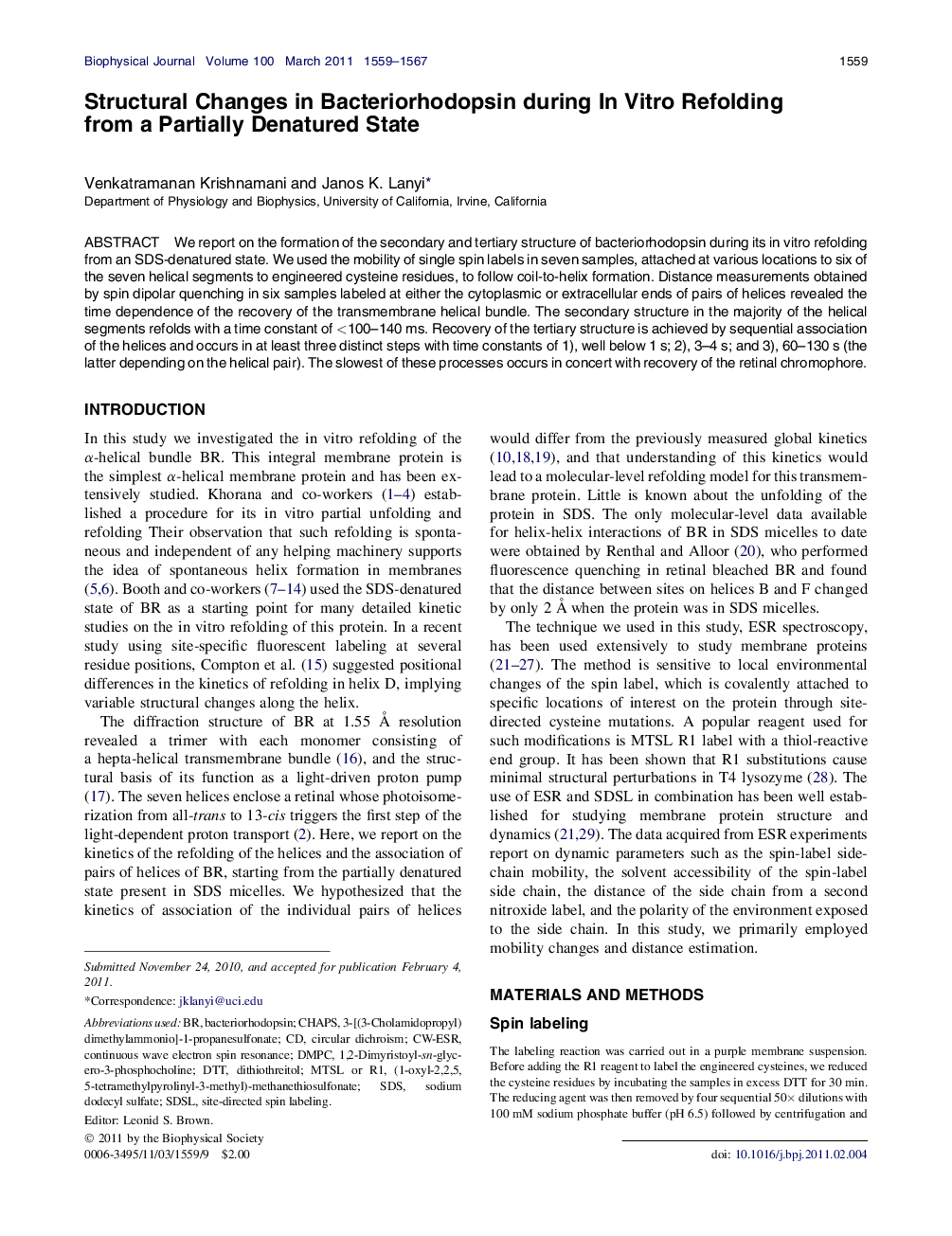| Article ID | Journal | Published Year | Pages | File Type |
|---|---|---|---|---|
| 1954340 | Biophysical Journal | 2011 | 9 Pages |
We report on the formation of the secondary and tertiary structure of bacteriorhodopsin during its in vitro refolding from an SDS-denatured state. We used the mobility of single spin labels in seven samples, attached at various locations to six of the seven helical segments to engineered cysteine residues, to follow coil-to-helix formation. Distance measurements obtained by spin dipolar quenching in six samples labeled at either the cytoplasmic or extracellular ends of pairs of helices revealed the time dependence of the recovery of the transmembrane helical bundle. The secondary structure in the majority of the helical segments refolds with a time constant of <100–140 ms. Recovery of the tertiary structure is achieved by sequential association of the helices and occurs in at least three distinct steps with time constants of 1), well below 1 s; 2), 3–4 s; and 3), 60–130 s (the latter depending on the helical pair). The slowest of these processes occurs in concert with recovery of the retinal chromophore.
